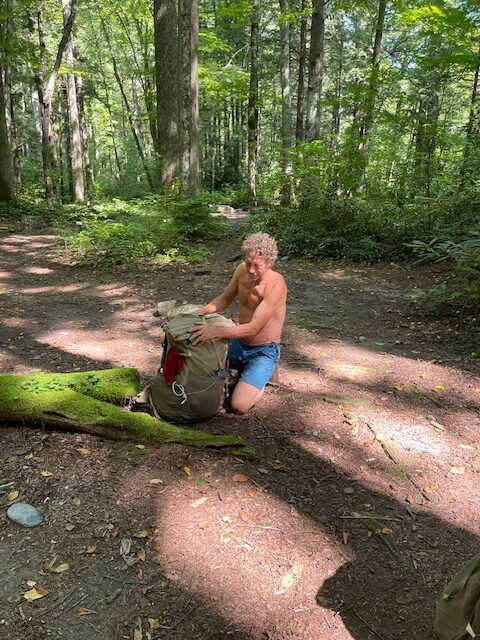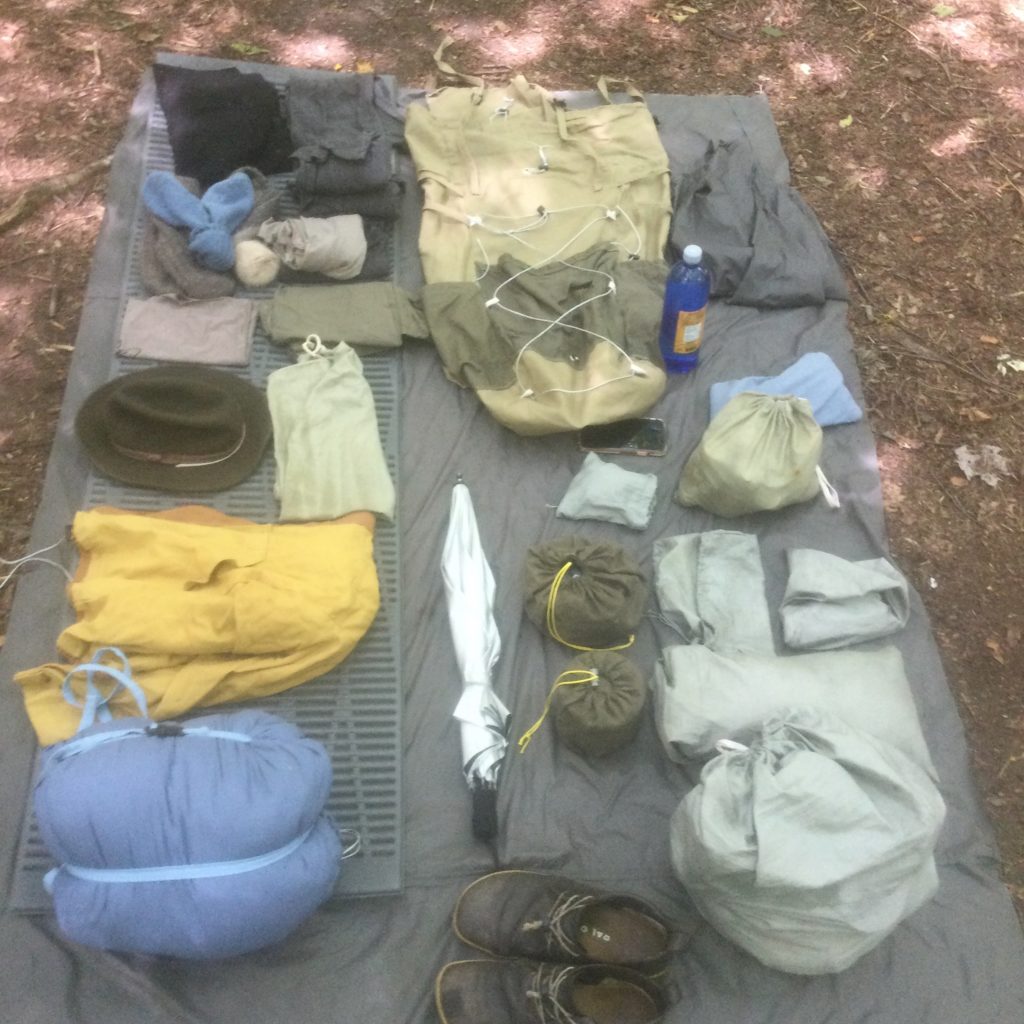Lightweight backpacking refers to a style of backpacking where the base weight of the pack is minimized to enhance comfort and efficiency while still maintaining safety. In recent years, with the development of NASA-engineered synthetic fabrics and chemical treatments for down insulation, there has been an obsession with reducing pack weight beyond what was previously possible. However, in our attempts to get closer to nature, we often end up wrapping ourselves in several layers of plastic and exposing ourselves to hazardous chemicals. Some hikers abandon ultra-lightweight gear due to compromises in comfort and safety.
Weight Classifications in Backpacking
- Traditional Backpacking: Base weight of 30+ lbs (13.6+ kg)
- Lightweight Backpacking: Base weight of under 20 lbs (9.1 kg)
- Ultralight Backpacking: Base weight of under 10 lbs (4.5 kg)
- Super Ultralight Backpacking: Base weight of under 5 lbs (2.3 kg)
Key Terms
- Base Weight – The total weight of your backpack excluding consumables (food, water, and fuel).
- Consumable Weight – The weight of food, water, and fuel, which varies depending on trip length and conditions.
- Total Pack Weight – The combined weight of base weight and consumables at the start of a trip.
Why Weight Matters
There is good reason to scrutinize every ounce we carry. Each additional pound burns more calories, and there is a limit to how much energy we can expend before exhaustion sets in. This drive for efficiency has led the backpacking market toward high-tech, lightweight synthetics. However, if we only focus on weight-to-warmth ratios, we neglect other important aspects of quality gear, such as effectiveness in adverse conditions, comfort, sleep quality, and environmental impact.
For example, adding just three pounds to a pack on a 20-mile trek will result in approximately three-quarters of a mile lost in distance due to increased fatigue.
Pack Weight vs. Performance
| Pack Weight (lbs) | Pack Weight (kg) | Calories Burned per Hour | Speed (mph) | Miles per Day | Kilometers per Day | Calories Burned per Day |
|---|---|---|---|---|---|---|
| 15 | 6.80 | 451.25 | 2.6 | 20.8 | 33.47 | 3610 |
| 17 | 7.71 | 460.75 | 2.56 | 20.48 | 32.95 | 3686 |
| 20 | 9.07 | 475.00 | 2.5 | 20 | 32.18 | 3800 |
| 25 | 11.33 | 498.75 | 2.4 | 19.2 | 30.89 | 3990 |
| 30 | 13.60 | 522.50 | 2.3 | 18.4 | 29.61 | 4180 |
| 35 | 15.87 | 546.25 | 2.2 | 17.6 | 28.32 | 4370 |
| 40 | 18.14 | 570.00 | 2.1 | 16.8 | 27.03 | 4560 |
The Body as an Electrical Field
The surface of our skin generates an electrical field that interacts with both our environment and internal bodily systems. Our nervous system, composed of electrical circuits, combines with this surface charge to create measurable electrical potentials. Different types of clothing can alter these potentials.
Synthetic clothing, for instance, builds up a static charge, which is why people wearing synthetic layers often experience small electric shocks when touching metal objects. Bioenergetic therapy practitioners suggest that static electricity disrupts the body’s electrical network, potentially affecting overall health.
Natural fiber clothing, on the other hand, allows for better interaction with Schumann’s Resonance and the Earth’s electromagnetic field, which can enhance the benefits of Forest Bathing and improve overall well-being.
Wearing Wool Sleepwear Improves Sleep Quality
A study by The University of Sydney found that adults wearing wool sleepwear fell asleep in just 12 minutes, compared to 22 minutes for those wearing polyester and 27 minutes for those in cotton.
Wool helps regulate body temperature, keeping wearers in the thermal comfort zone for longer. This leads to quicker sleep onset, deeper sleep, and less sleep fragmentation. Additionally, synthetic bedding has been shown to increase heart rate and brain wave activity, whereas wool helps maintain optimal levels for restorative sleep.
Natural Fiber Backpacking Gear Setup
Although natural fiber gear may add a few pounds compared to synthetics, many hikers believe the benefits far outweigh the weight increase. Below is a mostly natural fiber backpacking gear list suitable for weekend trips or long-distance thru-hikes.
Pack:
- Beeswaxed canvas 65L backpack (Lucky Sheep) – 1.5 lbs (40 oz)
Shelter:
- Silnylon Ray-Way open tarp with bug net – 2 lbs (fits two people)
Clothing:
- Merino wool base layers, wool sweaters, wool pants, and wool socks – ~4 lbs
Rain Shell:
- Waxed canvas rain parka (Lucky Sheep) – 1.5 lbs (40 oz)
Cook Gear:
- Alcohol stove & titanium pot – ~1 lb
Sleep System:
- Rewilder wool sleeping bag – 4 lbs
- Closed-cell foam sleep pad – 8 oz
Extras:
- Flashlight, map, compass, hatchet, reading/writing supplies, digital equipment, first aid kit, toiletries – ~4 lbs
Food, Water & Fuel:
- Food weight: ~2 lbs per day
Total base weight: ~20 lbs
Total pack weight for a 4-day trip: ~30 lbs (including food & water)
By embracing natural fibers and mindful gear choices, it is possible to enjoy the benefits of lightweight backpacking without sacrificing health, comfort, or environmental responsibility. While synthetic materials dominate the modern outdoor industry, natural fiber alternatives provide a viable and rewarding approach to hiking in harmony with nature.
For decades, the outdoor industry has leaned heavily on synthetic materials, pushing natural fibers into the background. But history has shown that the gear we use is always evolving. Today, as we face environmental concerns, durability issues, and the limitations of petroleum-based fabrics, we have a chance to rethink our choices.
Natural fibers aren’t just a nostalgic throwback—they’re a viable, high-performing alternative that many outdoor adventurers are rediscovering. From wool’s superior moisture regulation to waxed cotton’s durability and fire resistance, these materials offer unique benefits that synthetics simply can’t replicate. By considering all four dimensions—environmental impact, performance, health, and economics—we can make more informed choices about our gear.””There’s no one-size-fits-all answer, but the best outdoor gear is the gear that works in the real world, not just in a lab test or marketing campaign. It’s time to bring natural fibers back into the conversation.


